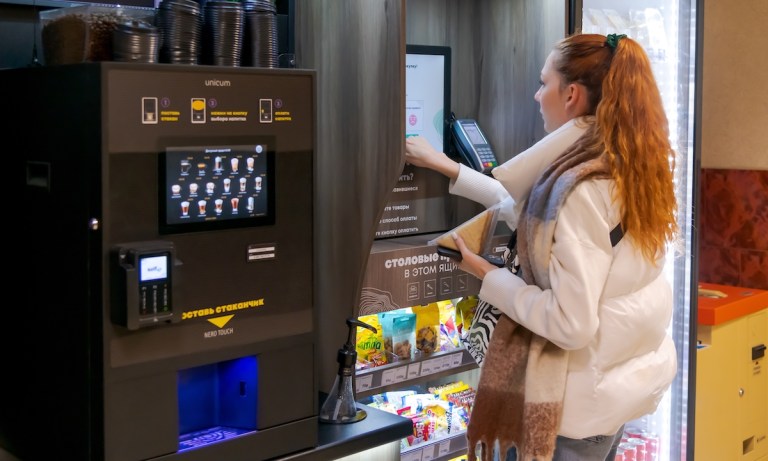However, there has been a shift, with unattended payments technologies increasingly becoming indispensable in today’s fast-paced retail environment.
Ellie Smith, global head of digital acceptance at Discover® Global Network, pointed to a confluence of factors propelling this trend in an interview with PYMNTS.
Drawing insights from “Unattended: The Payments Technology Shifting the Future of Commerce,” a joint PYMNTS Intelligence and Discover Global Network research study, Smith emphasized the role of technological advancements in enabling more secure and seamless unattended transactions. That, and the increasing demand from consumers for self-service solutions, has served as a driving force behind the innovation in unattended payments.
“[You] have the payment technology providers and merchants who benefit both from speed and managing their employee base,” Smith said, ultimately creating a unique, “win-win situation” facilitating rapid advancements in the unattended space.
However, Smith pointed out that widespread adoption of these advancements is still a considerable distance away for both consumers and the industry. Therefore, merchants must tailor their approach to meet consumers at their current level of comfort while recognizing the unique potential each method holds in transforming unattended payment experiences.
Advertisement: Scroll to Continue
For instance, many consumers are increasingly comfortable with facial recognition technologies. SoftPoint’s FacePoint solution exemplifies this, allowing enrolled users to pay using facial recognition at unattended kiosks or other checkout points.
Contactless unattended payment options like Ingenico’s palm vein technology, offer convenience. This solution enables consumers to identify themselves and make payments by scanning their palm over a sensor, streamlining the checkout process.
Cashierless stores can epitomize a future where personalized shopping experiences redefine convenience, efficiency and security in retail. According to Smith, consumer adoption of these innovations will naturally evolve with time and familiarity, shaping the future of retail transactions.
Finding the Sweet Spot Between Speed, Value and Practicality
According to findings detailed in the study, only 15% of consumers are highly satisfied with the self-service tools provided to them, signaling a gap between merchants’ offerings and customer expectations. This discrepancy poses a risk for merchants, as failing to meet these expectations could result in being surpassed by competitors.
For merchants, navigating this evolving landscape requires striking the right balance between speed, value and practicality. This involves understanding consumer needs and business models, as well as the risk factors involved, to ensure the successful deployment of unattended payment solutions.
“As with deployment of any new technology, looking at your business model, understanding your customer and where there might be risk in the equation is essential to meeting consumer needs and finding that sweet spot,” she said.
Once players in the ecosystem can figure out the best solutions for each consumer and each experience, she said “consumers will get more comfortable, and satisfaction will continue to rise.”
Expanding Unattended: Think Globally, Act Locally
The unattended payments market is projected to reach $129 billion globally by 2030, signaling opportunities for businesses in the global commerce market.
This includes the proliferation of micromarkets and pay-at-the-table solutions, alongside hybrid models that offer convenience and integration with loyalty programs.
Smith cited solutions developed by 365 Retail Markets, Cantaloupe, Mashgin and Nayax as examples of how unattended payments are becoming increasingly common in settings like stadiums, hotels and educational institutions, which may add benefits like reduced staff requirements and faster throughput.
To fully capitalize on these opportunities, she stressed the importance of merchants adopting proactive strategies tailored to both customer needs and business goals. This includes using relationships with technology providers and payment experts who can aid in devising customized approaches aligned with evolving market dynamics.
Finally, businesses must consider geographical nuances and cultural factors when implementing unattended solutions globally, acknowledging that a one-size-fits-all approach may not suffice across markets. This approach may help establish that unattended payment solutions resonate with consumers and drive success in diverse markets worldwide.
As Smith said, “you can’t just copy-paste [a solution] without making sure you know the impacts of what you’re rolling out in a given geography.”
For all PYMNTS retail coverage, subscribe to the daily Retail Newsletter.

